
The Old Town Hall (Altes Rathaus Bamberg) is a medieval town hall in Bamberg, which is one of the most important and beautiful buildings that characterize the historical center of the city.
The Town Hall is a complex of buildings with adjacent bridges and the Ludwig Museum is now located within its walls.
The location of the town hall is interesting. It stands on an artificial island in the middle of the Regnitz River, between the former episcopal and working (urban) districts.
Legend has it that the Bishop of Bamberg did not give permission to the townspeople to build a town hall, and then the townspeople, by driving wooden piles, erected an artificial island between the two districts, on which the Bamberg Town Hall was erected.
A bridge passes through the tower of the town hall. Therefore, the town hall is sometimes called the "Town Hall on the bridge".

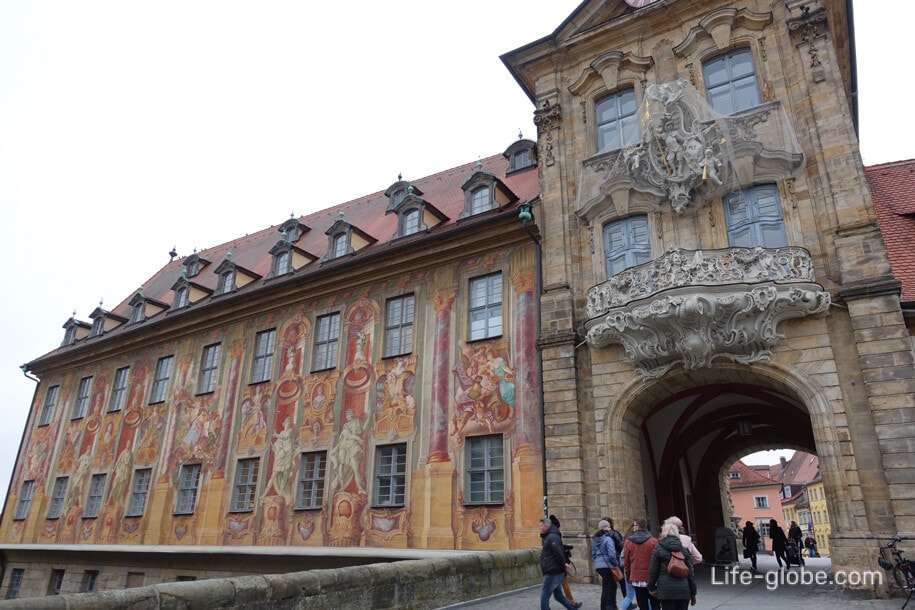
The town hall was first mentioned in 1387. It was rebuilt between 1461 and 1467, when it took its current form. Then the town hall had Gothic features.
In 1744-1756, according to the project of Johann Jakob Michael Kuchel, the town hall was supplemented with elements in the Baroque and Rococo style, and received its modern look.
The facade murals on the walls of the town hall were originally created in 1755 by Johann Anwander. After that, they were repeatedly restored. Thus, the walls of the town hall are decorated with allegorical scenes and architectural details, typical illusionary paintings of that time.
The two-storey town hall building with a sloping roof stands on a high stone plinth.
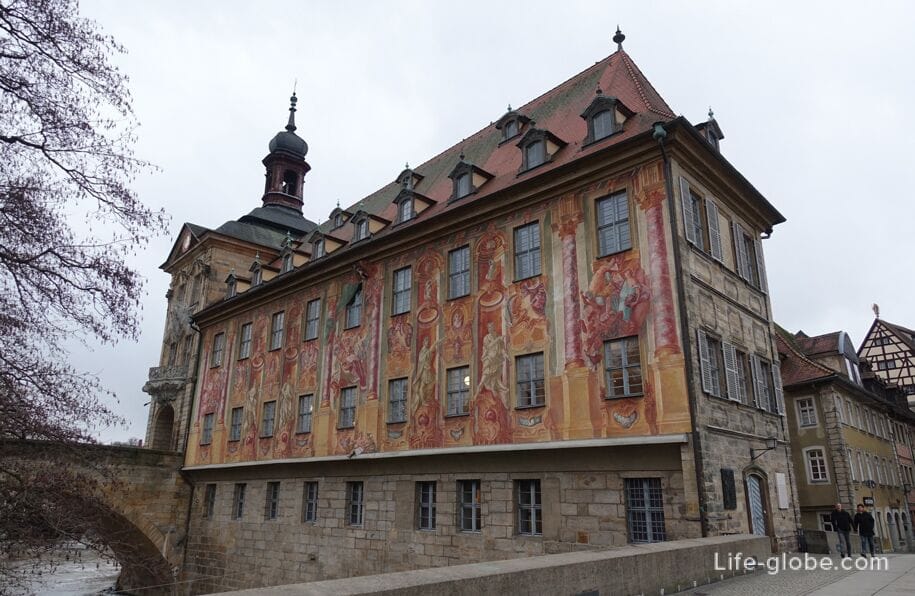
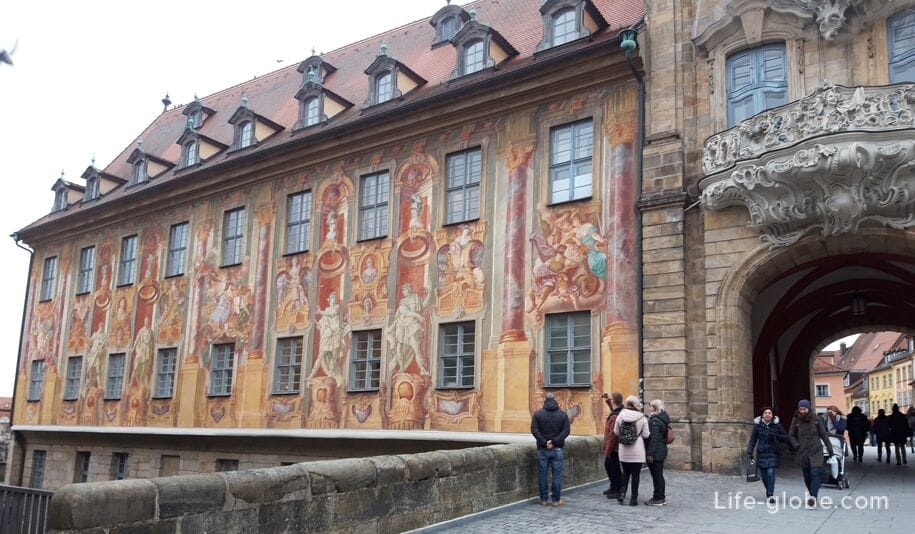
On the eastern side of the facade of the Old Town Hall, the putti is particularly noteworthy, which is painted, and its leg exposed from the wall is sculptural. At the top you can see a sculpture of an angel "flying out of the wall".
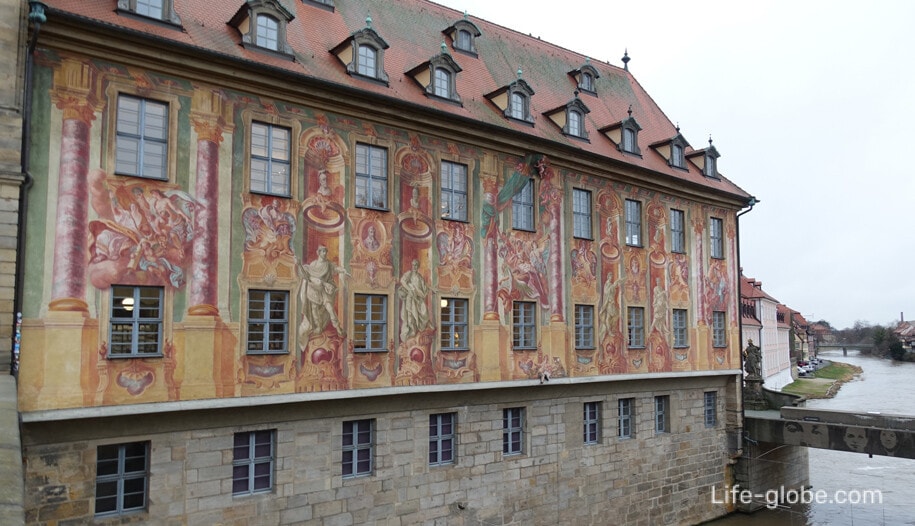
The bridge tower of the town hall was rebuilt in the 15th century and probably increased by one floor in 1749-1751.
The ornate balconies and coats of arms on both sides of the tower were created in 1755-1756 by Joseph Bonaventure Mutschele.
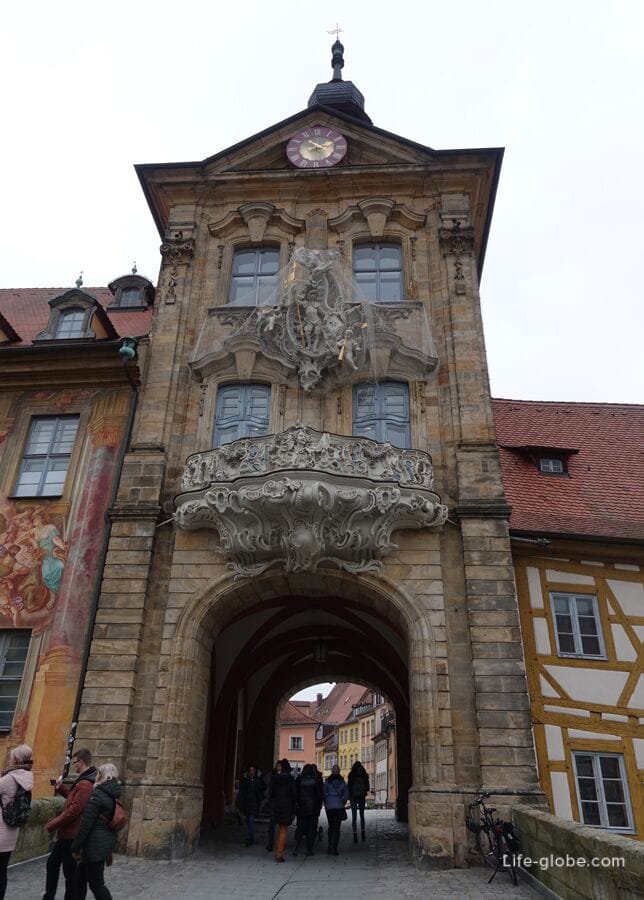
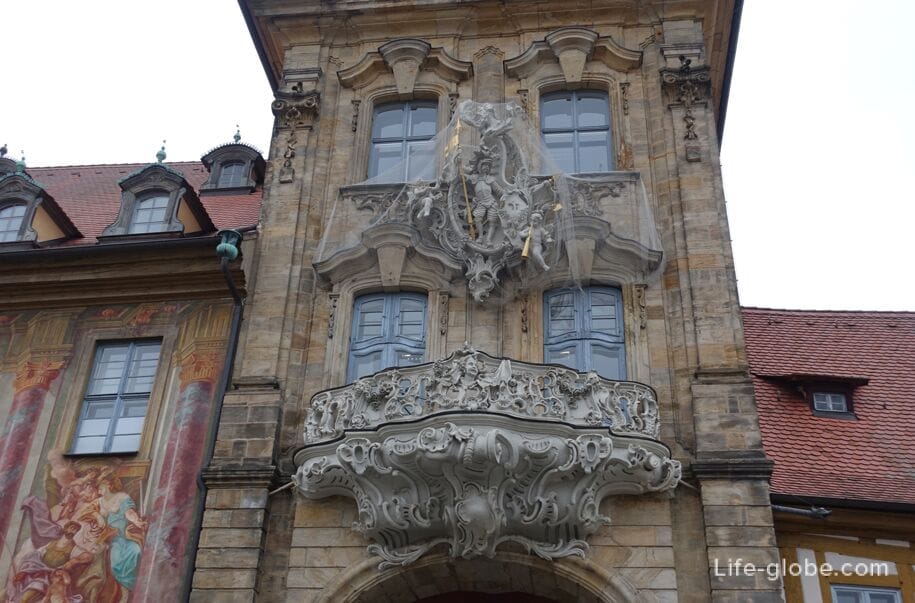
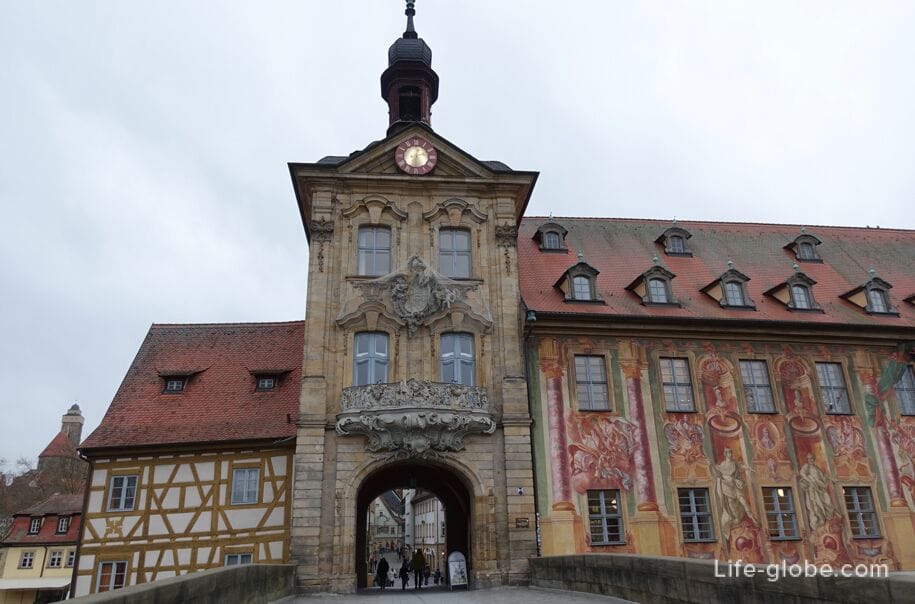
Through the arched opening of the tower runs the Upper Bridge (Obere Brücke), which was built in 1453 and connects the shores of the town hall.
On the east side of the bridge there are: a sculptural composition of the crucifixion, works by Leonard Golvitzer (1715) and a monument to the bishop.

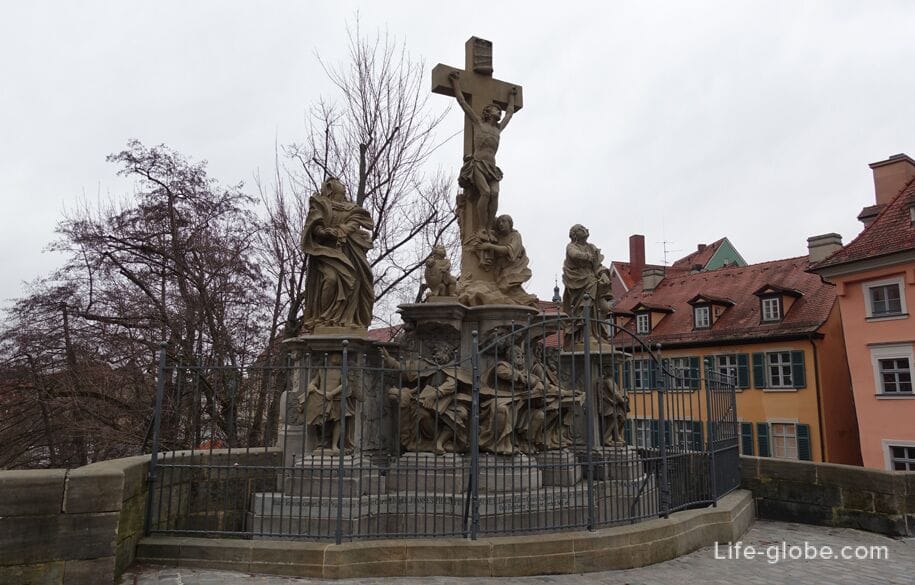

On the west side of the Upper Bridge there is a model of the Bamberg Town Hall with a nearby ensemble.

View of the Town Hall tower and the Upper Bridge from the west side of the city

On the other side of the town hall (north) runs the Lower Bridge (Untere Brücke).
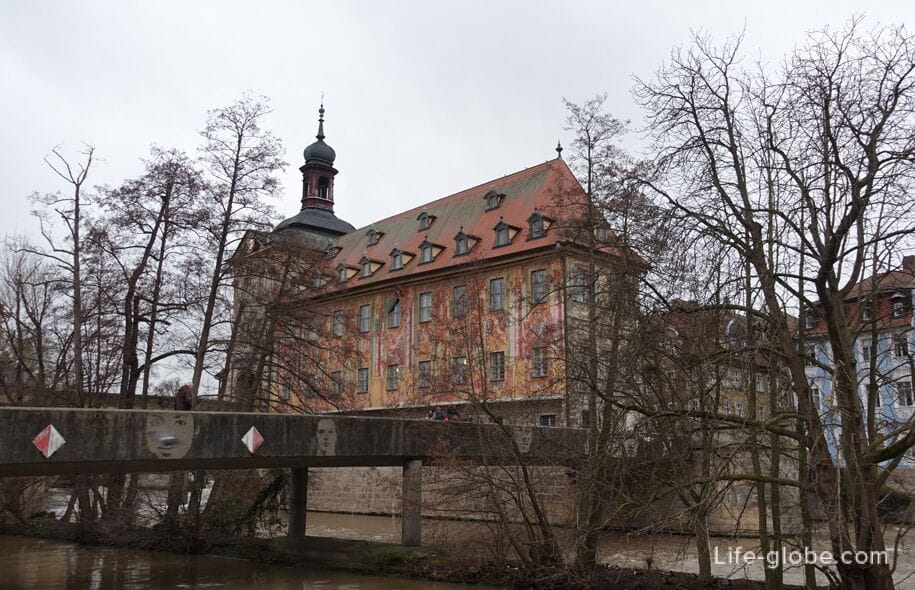

The statue of Saint Kunigunde (Kaiserin Kunigunde), the patroness of Bamberg, is notable on the Lower Bridge.
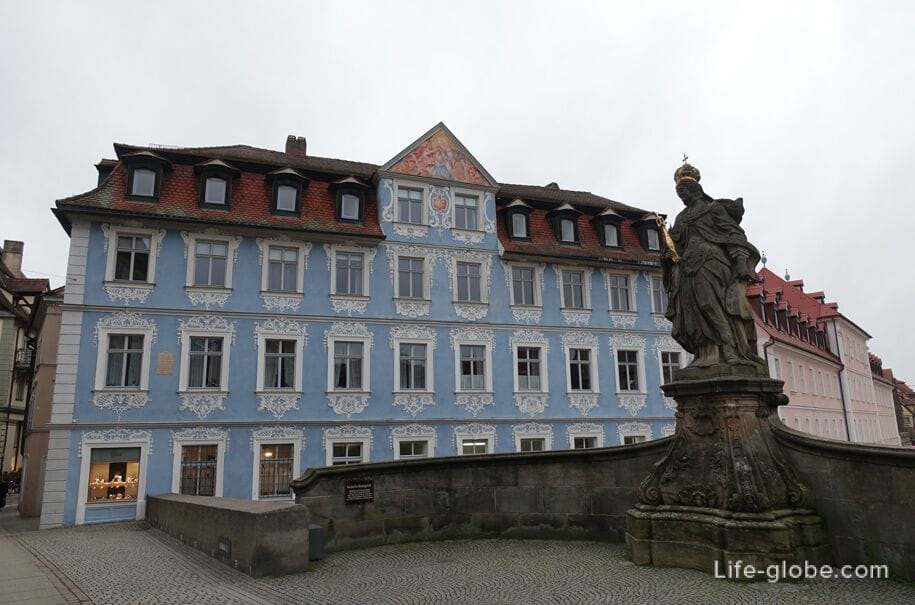
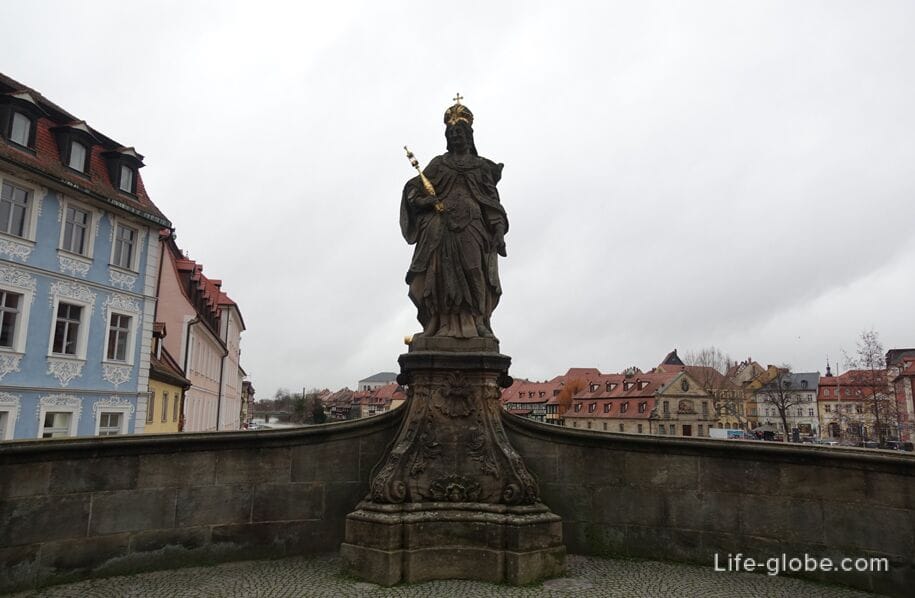
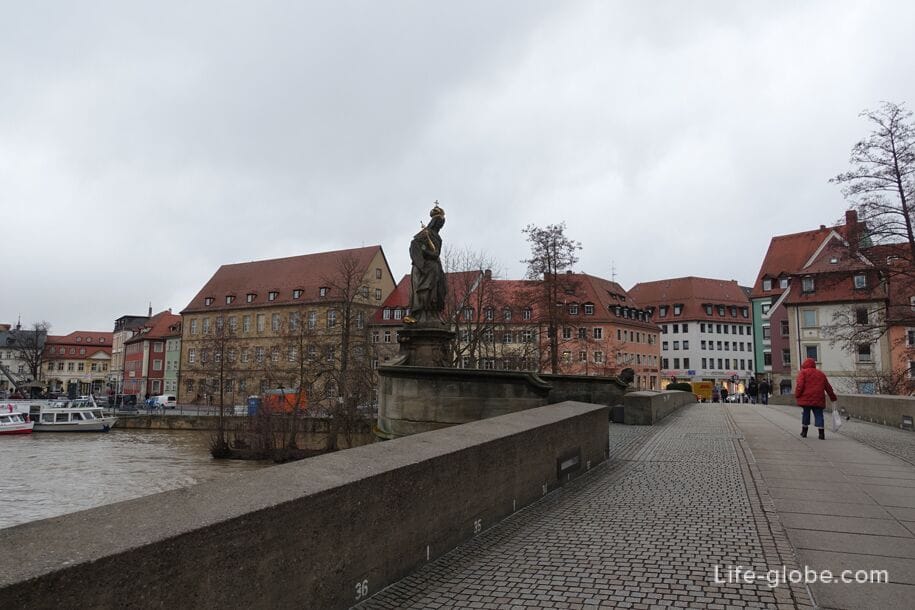
View of the northern facade of the Town Hall from the Lower Bridge
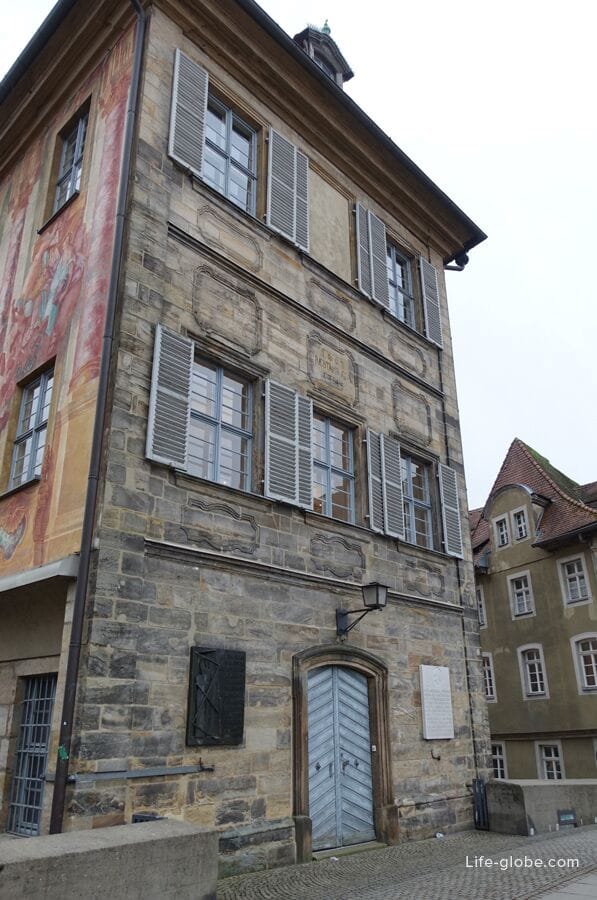
On the side of the Upper Bridge (south), a three-story half-timbered house with a sloping roof adjoins the Bridge Tower of the Old Town Hall - this is the Rottmeisterhäuschen house, which served as a living room for the leaders of the guards.
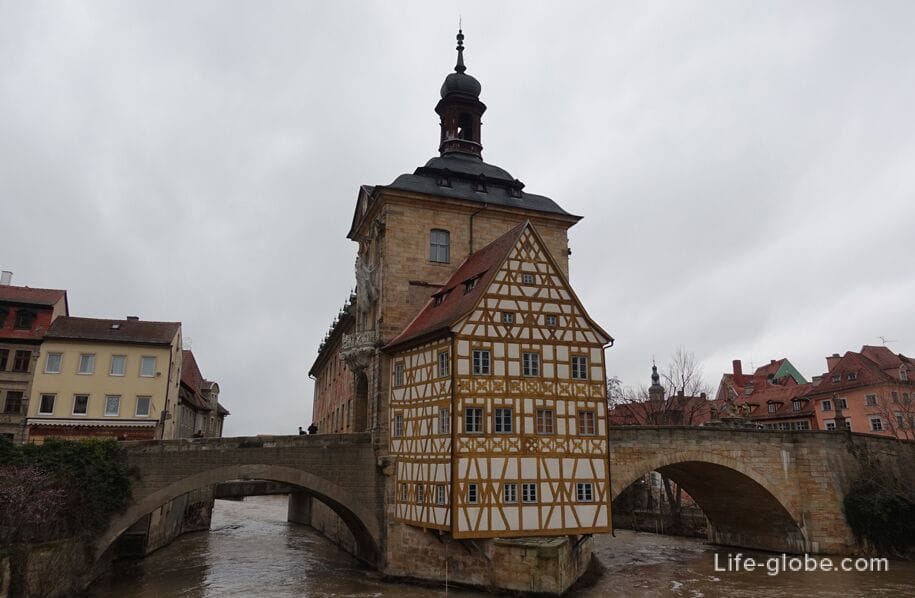

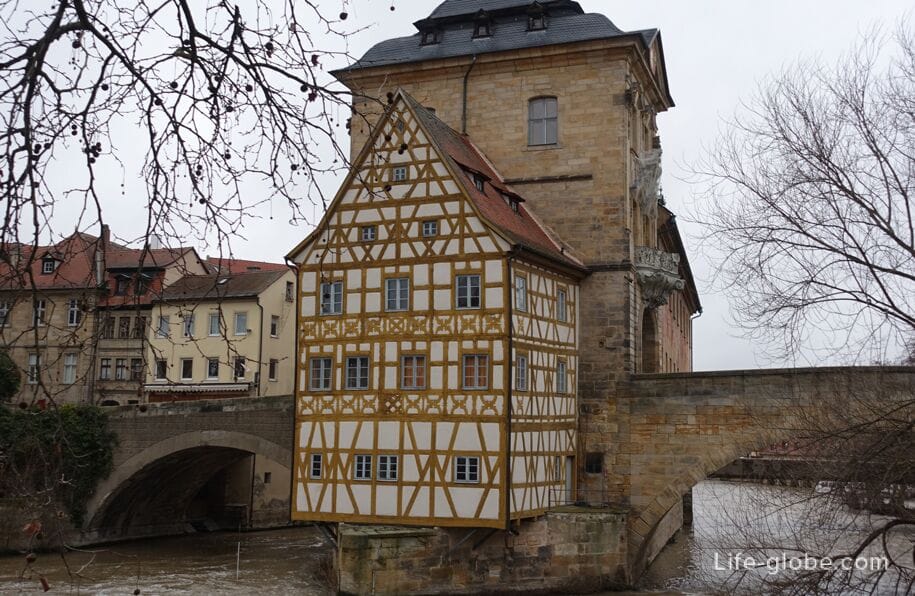
Today, the Ludwig Museum (Ludwig Collection) operates within the walls of the old town Hall, with a collection of Strasbourg faience and porcelain from the collection of the chocolate manufacturer Ludwig called "Baroque Splendor".
Adjacent to the exhibition is the famous Bamberg Rococo Councillors' Hall.
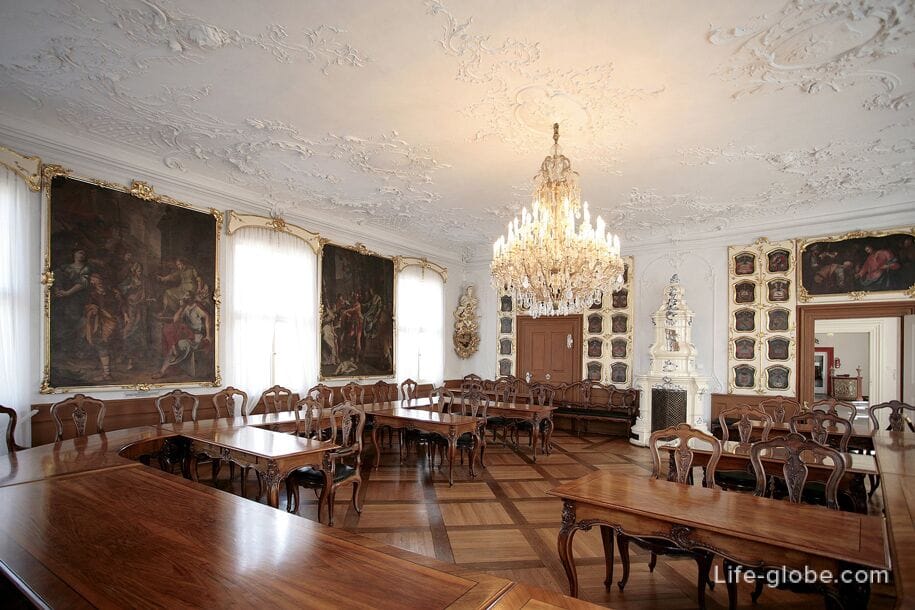
The old Town Hall of Bamberg is located in the heart of the city.
Coordinates of the Old Town Hall of Bamberg: 49°53'29.0"N 10°53'12.0"E (49.891389, 10.886667).
Entrance to the Ludwig Museum is paid. Museum website: sammlung-ludwig.
The new Bamberg Town Hall is located in the city center on Maximilian square (Maximiliansplatz Bamberg).
All accommodation facilities in Bamberg, including in the historical center of the city and more remotely from it, can be viewed and booked here